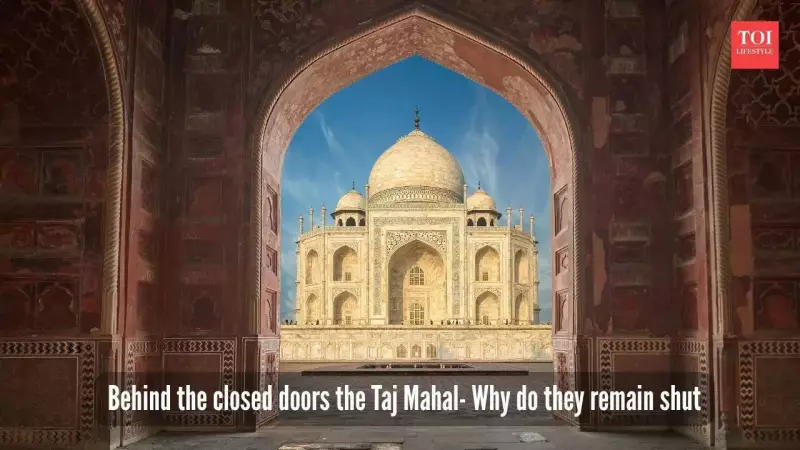
The Taj Mahal, standing as an eternal symbol of love and architectural brilliance, continues to fascinate millions with its pristine white marbles and intricate designs. However, beyond its breathtaking beauty lies a mystery that has captured public imagination for decades - what exactly lies behind its more than twenty sealed doors?
The truth about Taj Mahal's underground chambers
Contrary to wild speculation and conspiracy theories, the sealed chambers beneath the Taj Mahal are actually part of a traditional Mughal architectural feature known as 'tahkhana'. These underground structures were specifically designed to provide relief from Agra's intense summer heat. According to BBC reports, leading Mughal architecture expert Ebba Koch documented 15 such rooms aligned along the riverfront terrace.
The tahkhana complex included seven spacious rooms with niches, six square chambers, and two octagonal rooms, all originally decorated with beautiful geometric and star-patterned designs. These chambers, which once opened to the Yamuna River through elegant arches, served as comfortable retreats for Emperor Shah Jahan, his family, and royal entourage during their visits to the monument.
Why the chambers remain closed today
Delhi-based historian Rana Safvi provided crucial insight into why these chambers are no longer accessible to the public. The major flooding of Yamuna River in 1978 caused significant damage to some underground chambers, resulting in silting and structural cracks. Following this natural disaster, the Archaeological Survey of India (ASI) made the decision to seal the rooms to protect the monument's structural stability.
The ASI has occasionally opened these chambers for essential restoration work, as documented in their January 2022 newsletter. These conservation activities involve repairs to plaster, walls, and staircases, ensuring the long-term preservation of this UNESCO World Heritage Site.
Debunking common myths and controversies
The 22 sealed rooms have been subject to numerous unfounded claims, including theories that the Taj Mahal was originally a Hindu temple or that the chambers contain hidden treasures or idols. These speculations gained some traction through the work of PN Oak, who founded an institute for rewriting Indian history in 1964 and made such claims in his book.
However, KK Muhammad, former regional director (North) of ASI who played a significant role in the Ayodhya Ram Mandir excavation, firmly rejected these theories. He explained to The Quint that "if it was a temple, there would be a garbhagriha (sanctum sanctorum), antarala (a foyer), and a mandapa (pillared hall). There is no such thing that exists there."
Muhammad further clarified that the underground galleries were constructed primarily to "raise the height of the monument" and that there's "nothing to be seen here" that would justify public access, apart from logistical challenges. Similar underground structures are found in other Mughal architectures, such as the forts in Lahore, Pakistan, confirming this was a common architectural feature rather than something mysterious.
The Archaeological Survey of India has previously released photographs showing restoration work in these chambers, demonstrating their commitment to transparency while ensuring the monument's preservation remains the top priority.





